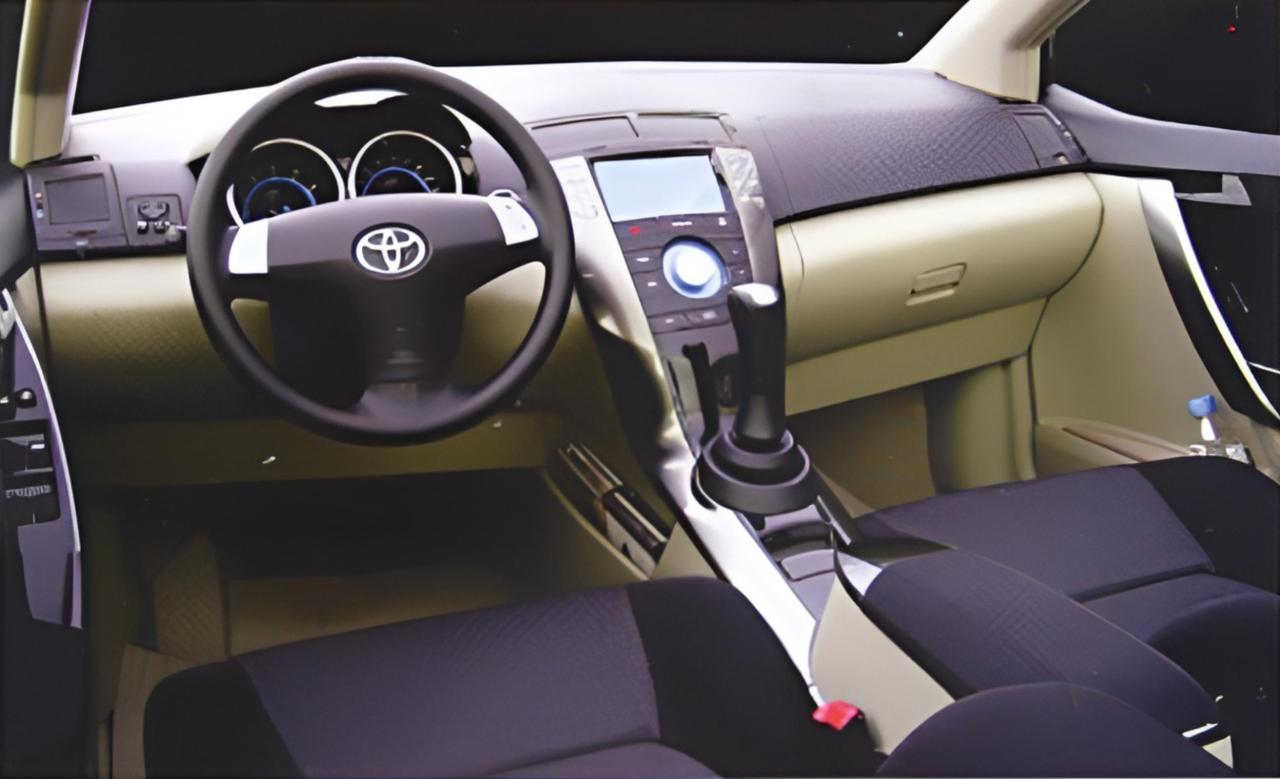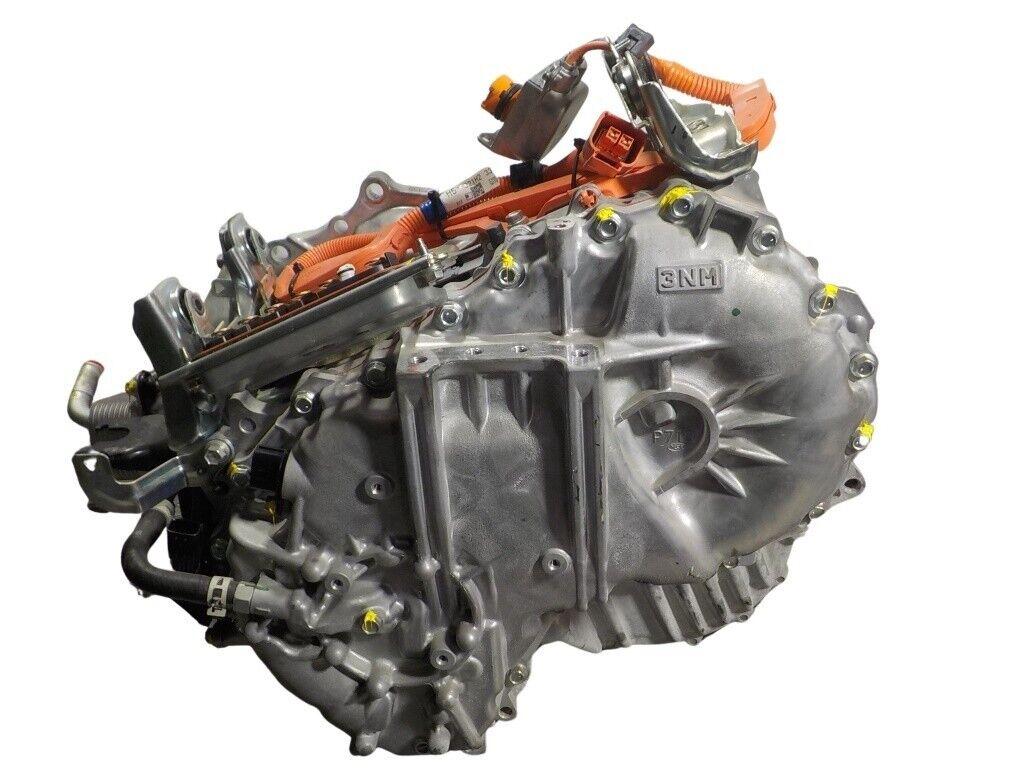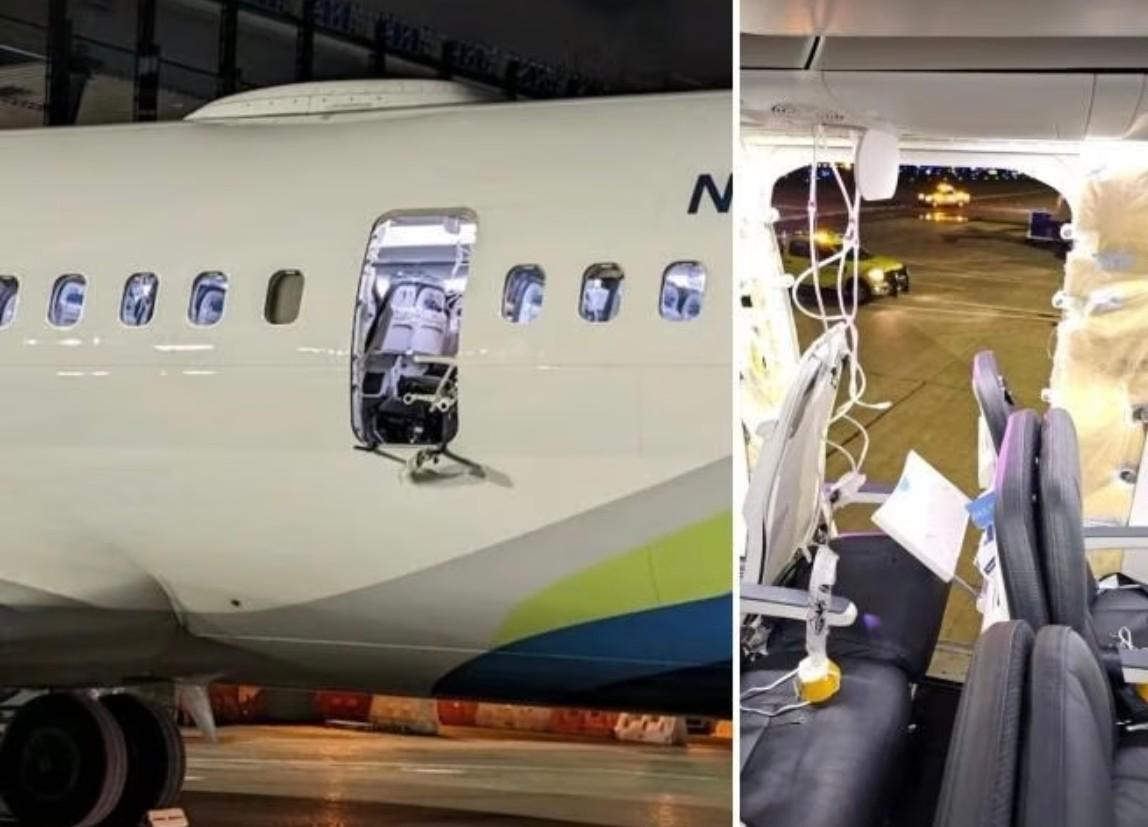-
Numero contenuti pubblicati
49996 -
Iscritto il
-
Giorni Massima Popolarità
35
Tipo di contenuto
Forum
Galleria
Calendario
Download
Articoli del sito
Store
Blog
Risposte pubblicato da J-Gian
-
-
1 ora fa, AlexMi scrive:
Si vedrà, nel frattempo si tratta solo di essere obiettivi e non scadere nella partigianeria più infantile.
I risparmi su Golf ci sono stati e sono stati anche tanti nel passaggio 7->8, in quel caso senza calo di listini e quindi con aumento di margini per VW.
Ma in questo restyling non ce ne sono, almeno non nelle modifiche note ad oggi.
Stavo mettere un like, ma poi ho letto meglio la prima frase: cerchiamo di non sminuire/offendere le persone, perché è superfluo, pesante e fastidioso.
PS. Il messaggio vale per tutti, non era per additare te in generale, proviamo ad alleggerire un po' l'atmosfera del forum, altrimenti non è più un piacere!
-
1 ora fa, alfagtv scrive:
Arrivato a strada libera ovviamente la batterie veniva caricata dal termico,arrivata a 2 tacche in rilascio al posto di spegnersi il termico i giri si sono alzati per 5/6 secondi fino a quasi 2000 e se frenavo i giri rimanevano alti.
Dimmi se ho capito bene, è successo quando avevi solo 2 tacche di carica? Ed a che velocità eri quand'è successo?
-
19 ore fa, Wilhem275 scrive:
Questo, che tu sappia, è un comportamento normale in tutte le auto con SK?
Che poi mi verrebbe da pensare che se è chiusa smette di cercarla dentro, ma comincia a cercarla fuori 😬
Una volta che si chiude, dopo pochi minuti la ricerca della chiave diventa via via più sporadica, fino a diventare praticamente insignificante per la batteria dei servizi.
A meno che non ci sia qualcosa che non va, allora i discorsi cambiano 😅
On 19/1/2024 at 00:02, Riekr scrive:Hai già provato a pulire l'interno del vetro con uno sgrassatore?
Peché se ci sono dei residui di lavorazione, sai che la patina grassa assorbe volentieri l'umidità presente in abitacolo

-
 2
2
-
-
On 22/1/2024 at 13:32, linespertoesperto scrive:
Da nuova la macchina faceva 28-30 km/l, adesso è sui 23-24 km/l.
Ma in tutto questo, tu guidi sempre negli stessi percorsi, o sono cambiate anche le tue abitudini?
On 22/1/2024 at 13:32, linespertoesperto scrive:Se apro il tappo dell'olio con motore a minimo, non vedo fumo ma sento leggera puzza fumo di scarico. È accettabile? O devo già considerarlo blowby vero e proprio?
Dovrei vederlo/sentirlo per riuscirti forse ad aiutare, ma da come lo descrivi non ti dovresti preoccupare. E' abbastanza normale sentire odori riconducibili ai gas di scarico, soprattutto su un diesel di quell'età/chilometraggio

PS. mangia/aumenta di tanto il livello d'olio?
-
On 19/1/2024 at 05:58, ail1996 scrive:

Leva del cambio disegnata da "Rocco" (non Bormioli...)

-
 1
1
-
-
56 minuti fa, Gengis26 scrive:
sistema powersplit di Toyota/Ford, pur non sempre garantendo piacere di guida (vedasi effetto scooter) è parco nei consumi.
Quando messo a punto a dovere, in effetti è una delle strade migliori per realizzare un'ibrida full/phev.
Non a caso Toyota non lo molla, pur proponendo un'alternativa prestazionale per l'alto di gamma, che appunto, sacrifica l'efficienza per guadagnare qualcosa su prestazioni e piacere di guida.
-
57 minuti fa, Gengis26 scrive:
Tutto corretto, anche se in casi estremi ho visto BEV ripartire con i cavi dell'auto ICE collegati come si faceva una volta (con i prototipi a volte tocca farlo :D)
Alla fine, se non hai alternative, si fa 😅
-
20 minuti fa, ILM4rcio scrive:
Bel casino, perché basterebbe poter attivare il riscaldatore. A sto punto, visto che di emergenza si tratta, non potrebbero prevedere un pre-riscaldatore a combustibile come viene offerto da decenni sulle auto ICE nei paesi molto freddi? Per quello che andrebbe non penso possa influenzare il clima.
Non sono informato, ma non n è da escludere che già qualcuno lo monti, sui bus c'è per il riscaldamento dell'interno.
Diciamo che chi ha la fortuna di avere un garage e presa di ricarica, può già climatizzare abitacolo e mantenere in temperatura la batteria HV. E nei paesi freddi, non sarei stupito se dovesse avere un sistema di riscaldamento anche quella dei servizi.
-
23 minuti fa, ILM4rcio scrive:
La 12V sulle BEV si può far partire col jump starter?
Di solito sì, ma con quelle temperature è un po' rischioso. Perché se l'auto da avviare usa una batteria al litio, questa solitamente è fatta per stare tra i 15-40 °C.
Aggiungiamoci che - sempre in caso di batteria 12 V litio - se batteria è prossima allo 0% di carica, in pratica hai una resistenza interna ridottissima, quasi un corto circuito.
Quindi l'ideale sarebbe:
- misurare la tensione e verificare che non sia troppo bassa;
- togliere la batteria, portarla al riparo ed aspettare che raggiunga i 20 °C;
- collegare un caricatore professionale, che verifichi che la resistenza interna sia adeguata (non sia in CC) e solo in tal caso avvia il processo di carica;
- rimontarla sull'auto.
Se l'auto monta una batteria tradizionale, si può tentare l'avvio "in parallelo", magari avendo l'accortezza di collegare il negativo a massa, nella speranza che salti un qualche fusibile di protezione in caso di corti.
-
9 ore fa, AlexMi scrive:
Anonima come poche nel design.
La meccanica è sempre Toyota?
8 ore fa, KimKardashian scrive:Ma non è tutto Toyota il pacchetto ibrido?
In passato, alcuni ibridi Ford, avevano proprio la stessa trasmissione. O meglio, prodotta dallo stesso fornitore di Toyota (con alcuni brevetti Toyota), con pochi adattamenti all'applicazione.
Sull'ultima Kuga, alla fine ognuno si è fatto tutto per conto proprio, pur partendo da un'architettura simile.
Trasmissione attuale Kuga:


Trasmissione attuale Rav4:


-
 1
1
-
 1
1
-
-
18 ore fa, Wilhem275 scrive:
A volte mi chiedo se non sarebbe stata più efficiente la pompa di calore, per evitare di far intervenire pesantemente il termico per scaldare, ma probabilmente avrebbe un consumo tale da richiedere comunque l'immediato intervento del termico... oltre ad essere un orpello aggiuntivo.
Forse lo sbrinatore elettrico del parabrezza avrebbe fatto la vera differenza, ma se non sbaglio si è diffuso poco (solo Ford?).
Una complicazione che avrebbe senso nelle zone climaticamente fredde, da usare soprattutto quando l'auto rallenta, va piano o è ferma, così da concentrare la generazione elettrica in velocità, quando con la stessa quantità di carburante fai più strada e puoi riscaldare l'abitacolo con l'energia termica dispersa dal motore.
Probabilmente su un'ibrida ci si potrebbe accontentare di un meno efficiente riscaldatore PTC, la cui azione ci concentra nelle decelerazioni, in modo da impattare meno sull'energia elettrica accumulata.
Quanto al parabrezza sbrinante, ricordo che fu un optional disponibile anche sulla Panda, ma non so quale sia l'effettiva diffusione.
2 ore fa, accakappa scrive:si, perfetto. Lo puoi fare solo se sei da solo: se hai la moglie e/o bambini .. ciao.
comunque alla fine non ho capito. Abbiamo la pompa di calore o no?. L'abitacolo si scalda solo col radiatore del termico come 'na volta o si scalda meglio e/o prima accendendo l'A/C. Voi come fate??
A me non risulta, il circuito frigogeno di Civic si occupa solo del raffrescamento, per quanto l'azionamento del compressore sia elettrico ed indipendente dal motore endotermico.
-
 1
1
-
-
On 13/1/2024 at 16:13, Alain scrive:
ha senso: chi si prende una BEV a noleggio con l'ansia di ricarica, magari possedendo un'auto ICE e non è pratico di ricariche?
Aggiungici che ogni danno causato da incidenti è un'incognita enorme: per gli incidenti rilevanti, c'è sempre l'incognita batteria; per quelli meno rilevanti, se sono Tesla, hai prezzi di ripristino spesso fuori dal mondo
-
5 ore fa, gilerak scrive:
Comunque il motore termico si accende molto più spesso e alla partenza sta acceso più tempo rispetto a quando faceva più caldo. Immagino questo sia normale, contando anche che l'auto dorme fuori.
Che mi di te di voi? Avete notato un divario simile?
4 ore fa, george.rova scrive:Io che faccio tratte più corte, nelle stesse condizioni di riscaldamento, e con temperature sotto zero, sono prossimo ai 7litri 100km. Credo sia normale, visto che il temico è sempre acceso. Anche nei tratti dove potrebbe essere in EV.
Succede di suo su un po' tutte le auto, ma sulle ibride è più evidente

Io ho una Toyota ibrida e capita lo stesso:
- motore/catalizzatore che tarda ad arrivare alla regimazione termica minima;
- motore che una volta spento si raffredda prima;
- olio motore rimane più denso (aumento attriti interni);
- motore sta acceso di più per esigenze di riscaldamento abitacolo (se potete, tenete il riscaldamento sotto i 20 °C e sfruttate di più il riscaldamento elettrico sedili/volante);
- riduzione del picco di rigenerazione elettrica a batteria fredda (forse però le Vs. Honda sono meno sensibili in questo).
Insomma, la differenza rispetto all'autunno/primavera è notevole
-
 1
1
-
4 ore fa, Damynavy scrive:
Non dev'esserci un bel clima nelle fabbriche Boeing, se si lavora così 🫣
-
8 ore fa, Costerinu scrive:
Ciao a tutti. ho un problema con la ventola interna (quella del clima/riscaldamento) della mia lancia Ypsilon del 2006. Ho già sostituito la resistenza che la fa funzionare alla velocità da 1 a 3, e ho risolto il problema solamente per qualche giorno. Ora non funziona nuovamente, se non alla massima velocità. Ho provveduto a rimontare lo stesso tipo di resistenza con lo stesso identico codice, ma non capisco quale possa essere l'anomalia o cosa può essere successo (sperando che non si sia bruciata nuovamente). Qualcuno ha qualche suggerimento o consiglio da darmi?
grazie!!
Potresti avere un problema ai connettori o ai cablaggi. Considera che se non fai (o meglio fai fare) un'indagine di tipo elettrico, potresti continuare a dover sostituire resistenze senza successo, talvolta compromettendole.
-
 1
1
-
-
-
Vista l'esagerato numero di richieste (
 ), al sondaggio è stata aggiunta anche la Golf 8, che inizialmente non c'era.
), al sondaggio è stata aggiunta anche la Golf 8, che inizialmente non c'era.
Se volete potete modificare il voto 🥶
-
Se avete in mente di prendervi una PHEV, con la previsione di usarla anche da scarica, prendetevi una Toyota, o una Lexus 😜
Oppure anche la nuova Honda CR-V, che - in città / suburbano - sembra consumare davvero poco carburante, anche a carica esaurita.
-
6 ore fa, ILM4rcio scrive:
Il senso di questa cosa?
Marketing, farci parlare del marchio 😅
-
 1
1
-
-
La plancia pre-FL era un po' più caratteristica

-
 1
1
-
-
Ragazzi, qui la fine dell'anno che è una bellezza 🤣
Gli anziani delle rispettive famiglie hanno voluto fare il pranzone di Natale, cascasse il mondo...
Eccoci qua, quindi: influenza stagionale+sovrapposizione di chissà quale altro rinovirus; tutti a casa da 4 giorni, con sintomi simpaticissimi ed adorabili 😬
Ero certo che dopo la pandemia, saremmo usciti "persone migliori", d'altronde, esperienza insegna... 🥶🥶🥶🤣
Auguri a tutti, speriamo che il nuovo anno inizi meglio di come si sta concludendo l'attuale 😅
-
 5
5
-
 2
2
-
-
CitaXiaomi Unveils Five Core Automotive Technologies and Debuts Xiaomi SU7, Completing the Human x Car x Home Smart Ecosystem12/29/2023
 16375 Views
16375 Views
Beijing, CHINA, December 28, 2023 - Xiaomi held its Xiaomi EV Technology Launch, officially unveiling Xiaomi EV's five core technologies - E-Motor, Battery, Xiaomi Die-Casting, Xiaomi Pilot Autonomous Driving, and Smart Cabin. From the development of foundational core technologies, Xiaomi aims to redefine the technology of the automotive industry.
Xiaomi EV's first product - the highly anticipated Xiaomi SU7, has been "pre-launched," with its design, performance, range, safety, and other details making global debut. Positioned as a "full-size high-performance eco-technology sedan," Xiaomi SU7 aims to push the limits of performance, ecosystem, and mobile smart space.
Quoting a sentence of Chinese poetry, "with firm strides we are crossing its summit." Lei Jun, founder, chairman, and CEO of Xiaomi Group, stated that Xiaomi's entry into the automotive industry marks a significant leap from the smartphone industry and a crucial step toward closing the loop of the Human x Car x Home smart ecosystem. Lei Jun further expressed that the century-old automotive industry offers little room for maneuvering today: "Xiaomi has decided to invest tenfold, starting from the development of fundamental core technologies, committing to constructing an outstanding vehicle. Through 15 to 20 years of effort, Xiaomi aims to become one of the top five global automakers."
Redefining the technology stack of the automotive industry
Smart electric vehicles are trending towards integration of the automotive industry with consumer electronics and intelligent ecosystems. Integrating full-stack technologies is a necessary step for the industry's evolution. Lei Jun stated that by integrating industrial manufacturing, smart software, and AI, Xiaomi EV will completely redefine the automotive industry, marking a significant leap in its technological landscape.
Xiaomi EV is committed to a bottom-up approach, starting from developing foundational core technologies and in-depth independent research in key technology sectors. With a commitment to "tenfold investment, conscientiously building a great car," Xiaomi EV has invested over 10 billion CNY in the initial research and development phase. The R&D team comprises over 3,400 engineers and over a thousand technical experts in critical domains both in China and abroad. This conference unveiled breakthroughs in the development of Xiaomi EV's five core technologies. In key sectors such as E-Motor, Battery, Xiaomi Die-Casting, Xiaomi Pilot Autonomous Driving, and Smart Cabin, numerous Xiaomi EV's self-developed technologies have become first-of-kind globally or domestically. This showcases Xiaomi's 13 years of comprehensive technological accumulation since its inception.
E-motor
At the conference, Xiaomi showcased its independently developed and manufactured E-motors, HyperEngine V6/V6s, and HyperEngine V8s. The three E-motors, employing innovative technologies such as Bidirectional Full Oil Cooling Technology, S-shaped oil circuit design, and staggered silicon steel laminations design, rival the performance of traditional large V8 and V6 powertrains from the era of internal combustion engines, pushing the industry's performance boundaries to new heights.
Notably, HyperEngine V8s, with a maximum speed of 27,200 rpm, 425kW output, and 635N·m peak torque, sets a global record for E-motors. To enable the industry-exceeding standard of 27,200 rpm, HyperEngine V8s employs the industry's first ultra high-strength silicon steel plate with a tensile strength of 960MPa, boasting strength that surpasses mainstream industry offerings by more than two-times.
For cooling design, HyperEngine V8s adopts a Bidirectional Full Oil Cooling Technology and an S-shaped oil circuit design. For the stator, a dual-cycle oil circuit is employed, increasing the heat dissipation area by 100% and achieving a cooling effect of up to 20°C. Meanwhile, the rotor section utilizes a patented S-shaped oil circuit, increasing the heat dissipation area by 50% and achieving a cooling effect of up to 30°C. Additionally, the stator silicon steel laminations feature a "step-like" staggered design, further increasing the effective heat dissipation area by an additional 7%.
HyperEngine V8s is in development, and set to be mass-produced and implemented in Xiaomi EVs in 2025.
Xiaomi's self-developed HyperEngine V6/V6s E-motors boast an industry-leading rotational speed of 21,000rpm, surpassing the most powerful mass-produced electric motor globally. Among them, the HyperEngine V6 super motor has a maximum power of 299PS and a maximum torque of 400N·m, while the HyperEngine V6s super motor achieves a maximum power of 374PS and a maximum torque of 500N·m.
Battery
Xiaomi has also self-developed CTB Integrated Battery Technology through innovative Inverted Cell Technology, multifunctional elastic interlayer, and a minimalistic wiring system; it features a battery integration efficiency of 77.8%, the highest of CTB batteries worldwide, a 24.4% overall performance improvement, and a height reduction of 17mm, with a maximum battery capacity of up to 150 kWh and theoretical CLTC recharge range exceeding 1200 km.
To ensure stable performance during long-range travel, Xiaomi employs industry-leading safety design standards. The downward-facing pressure relief valve swiftly releases energy in extreme situations, maximizing passenger cabin safety. A 14-layer robust physical protection system includes three layers of top support, three layers of side protection, and eight layers of bottom protection.
In terms of heat dissipation, a dual-side water cooling solution implements heat dissipation plates on both long sides of the battery cells, achieving a cooling area of 7.8m²—four times the industry average. The sides of the battery cells feature 165 pieces of aerogel insulation material, capable of resisting temperatures up to 1000°C.
Xiaomi EV is equipped with a self-developed Battery Management System (BMS) with ASIL-D, the highest functional safety level. This BMS includes three independent thermal runaway monitors and alarms, along with an around-the-clock early warning system. Each Xiaomi battery boasts industry-leading reliability and undergoes the most stringent battery safety tests, including 1050+ safety verifications and 96 times the international standard of durability testing duration.
Xiaomi Die-Casting
Xiaomi has unveiled its self-developed Xiaomi Die-Casting T9100 cluster and proprietary die-casting alloy material, Xiaomi Titans Metal, making it the only domestic automaker simultaneously self-researching both large die-casting and materials.
Xiaomi Die-Casting T9100 covers an area of 840m², with a total weight of 1050t and locking force reaching 9100t. Xiaomi has developed a foundation model quality judgment system that can complete inspections of individual pieces within 2 seconds, offering an efficiency ten times higher than manual inspection. The application of this cluster enables a remarkable achievement for Xiaomi EV, with the rear underbody integrating 72 components into one, reducing welded joints by 840, decreasing overall car weight by 17%, and significantly reducing production hours by 45%.
In material research and development, Xiaomi has developed Xiaomi Titans Metal, a high-strength, high-resilience, heat-treated die-casting material. Xiaomi's self-developed "Multi-Material Performance Simulation System" selects the optimal alloy formula from 10.16 million possibilities, ensuring a perfect combination of strength, resilience, and stability.
While the industry focuses on the tonnage of die-casting clamping pressure, Xiaomi is steadfastly pursuing a full-stack self-researched path. From materials and equipment clusters to finished castings, Xiaomi has completed nearly all aspects of the large die-casting industrial chain.
Xiaomi Pilot Autonomous Driving
In the field of intelligent software technology, Xiaomi has showcased its unique advantage as a global technology leader, driving the integration of the automotive and consumer electronics industries with intelligent ecosystems. In terms of autonomous driving, Xiaomi has pioneered three key technologies: Adaptive BEV Technology, Road-Mapping Foundational Model, and Super-Res Occupancy Network Technology.
Adaptive BEV Technology is an industry-leading innovation that invokes different perception algorithms based on scenario. The perception grid has a minimum granularity of 5cm and a maximum of 20cm, with a recognition range extending from 5cm to 250m. This technology ensures wider visibility in urban scenarios, extended vision in high-speed scenarios, and more precision in parking scenarios.
Road-Mapping Foundational Model revolutionizes traditional methods of perceiving road conditions. This model not only recognizes them in real time and intelligently switches to a more reasonable driving trajectory but can also navigate smoothly in complex intersections without relying on high-definition maps thanks to learning from complex intersection scenarios and experienced driver habits.
In terms of obstacle recognition, Xiaomi's Super-Res Occupancy Network Technology achieves unlimited categories of recognition for irregular obstacles. Compared to traditional networks that interpret obstacles as blocks, Xiaomi's innovative vector algorithm simulates all visible objects as continuous curved surfaces. This improves recognition accuracy to as low as 0.1m. Additionally, Xiaomi's self-developed one-click noise reduction feature eliminates the impact of rain and snow on recognition, significantly reducing the probability of misidentification.
In addition to the Road-Mapping Foundational Model, Xiaomi has also independently developed the world's first production-ready "End-to-End Sensing and Decision-Making AI Model" for automated parking. This model allows for real-time observation and dynamic adjustment when parking in challenging scenarios, such as parking facilities that include elevators.
On the hardware front, the system is equipped with top-of-the-line configurations, including two NVIDIA Orin high-performance chips with a combined computing power of 508TOPS. Perception hardware includes one LiDAR, eleven high-definition cameras, three millimeter-wave radars, and twelve ultrasonic radars on the Xiaomi SU7 Max model. With top-tier configurations and full-stack in-house research, Xiaomi's intelligent Autonomous Driving system is set to join the industry's top echelon by 2024.
Smart Cabin
Xiaomi EV Smart Cabin adopts a "human-centric" interaction architecture and features a 16.1-inch 3K central console, a 56-inch HUD head-up display, a 7.1-inch rotating dashboard, and two seat-back extension mounts that allow for the mounting of two tablet devices. It is equipped with the Snapdragon 8295 in-car chip with AI computing power of up to 30 TOPS, enabling an ultimate interactive experience with the linking of five different screens.
The interactive experience of Xiaomi Smart Cabin is similar to tablets, allowing users to quickly adapt without the need for a learning curve. The system operates exceptionally smoothly, with the vehicle OS launching in a rapid 1.49 seconds after the door is unlocked. Additionally, it offers seamless cross-device connection between smartphones and the EV. For example, when the phone is brought into the cabin, the console automatically displays an icon, enabling easy access to the phone's interface with a single touch.
The in-car OS seamlessly integrates mainstream applications, including the whole Xiaomi tablet application ecosystem, with gradual adaptation to over 5000 applications. Smartphone applications can be conveniently pinned to the car console, instantly transforming them into in-car applications. In terms of hardware integration, Xiaomi SU7 supports over 1000 Xiaomi smart home devices for effortless integration with the vehicle, enabling automatic discovery, password-free access, and the ability to set up automation scenarios, creating a robust CarIoT ecosystem. The car interior also has dedicated pin-point expansion connections, supporting plug-and-play functionality for a wide range of devices. To meet the needs of users, Xiaomi EV fully supports CarPlay, the mounting of iPads and iPad accessories, and applications on the rear extension mount.
"Technology x Ecosystem" leads evolution of EVs towards smart mobile spaces
During the presentation, Lei Jun shared Xiaomi's automotive goal: to craft a dream car for the new era of the automotive industry – a vehicle that is aesthetically pleasing, enjoyable to drive, comfortable, smart, and safe.
Representing the epitome of technology, experience, and aesthetics, the "trinity" dream car, Xiaomi SU7, is positioned as a "full-size high-performance eco-technology sedan," It aims to achieve high performance, eco-technology capabilities, and a comprehensive mobile smart space experience.
Xiaomi SU7 emerges as a pinnacle of performance with cutting-edge technology and advanced driving experiences. With a self-developed E-motor - HyperEngine, CTB Integrated Battery Technology, and a series of challenging technological innovations, such as the body structure manufactured from the Xiaomi Die-Casting T9100 die-casting cluster, Xiaomi SU7 Max achieves a zero-to-hundred acceleration in an impressive 2.78 seconds, firmly placing itself in the "sub-2-second supercar" club, while being capable of reaching an astonishing top speed of 265 km/h.
Xiaomi SU7 is also a truly versatile performer. With a fully self-developed Xiaomi Smart Chassis control algorithm, it possesses two major capabilities: Smart Multidimensional Sensing and Global Synchronized Control. This allows for millisecond-level adaptive dynamic chassis control across all scenarios, providing a stable handling experience while delivering an almost “bump-free" driving experience.
More importantly, Xiaomi SU7 incorporates three major ecosystem empowerments by integrating applications, hardware, and third-party CarIoT ecosystems, providing an unprecedented smart mobile space experience. The Xiaomi CarIoT ecosystem is fully open to third parties, featuring standardized interfaces, extensive communication protocol standards, and lightweight retrofit solutions for existing devices.
Lei Jun stated that the ultimate realm of smart electric vehicles is the fusion of technological breakthroughs and the seamless integration of user needs and their vehicles, where driving becomes intuitive.
Completing the "Human x Car x Home" smart ecosystem
At the end of October this year, Xiaomi announced a comprehensive upgrade of its group strategy, transitioning from "Smartphone x AIoT" to the "Human x Car x Home" smart ecosystem, with automobiles becoming a crucial component of Xiaomi's strategic focus.
The "Human x Car x Home" smart ecosystem is a comprehensive integration of scenarios involving people, cars, and homes, facilitating seamless connectivity of hardware devices, real-time coordination, and driving collaboration among industry partners. Lei Jun announced during this conference that with the addition of Xiaomi EV, the "Human x Car x Home" smart ecosystem has officially been completed.
The ecosystem enables mutual collaboration and evolution among individuals, devices, and intelligent services within the ecosystem. Leveraging HyperConnect cross-device connectivity, Xiaomi HyperOS seamlessly integrates over 200 product categories, including Xiaomi EV. The ecosystem coverage extends to over 95% of users' daily scenarios, allowing intelligence to intricately serve each individual. Simultaneously, with AI empowerment, Xiaomi HyperMind serves as the center for intelligent reasoning, and can perceive and learn from usage, providing automated, proactive solutions.
Additionally, "Human x Car x Home" smart ecosystem achieves mutual empowerment among products, technologies, and industries, maintaining an open platform; Xiaomi adheres to the principle of "continuous R&D in foundational technology, continuous and long-term investment." Over the past 13 years, Xiaomi has strategically positioned itself in 12 technology domains and 99 sectors. Guided by the principle of "further integration of software and hardware, and fully harnessing AI capability," Xiaomi has developed a "converged technology stack," continually empowering product research and development as well as manufacturing.
Simultaneously, Xiaomi collaborates with industry partners, including developers, supply chain, and manufacturing to harness the full potential of the entire industry, making Xiaomi HyperOS a more open platform and ensuring that "Human x Car x Home" becomes more inclusive and human-centered, capable of enabling a multitude of possibilities.
Lei Jun stated that Xiaomi's entry into the automotive industry marks a significant leap. This represents a long-term commitment and deep investment in foundational core technologies, a coming-of-age moment for Xiaomi's modern industrial intelligent manufacturing capabilities, and most importantly, a crucial step in completing the "Human x Car x Home" smart ecosystem. Lei Jun emphasized, "Xiaomi's entry into the automotive industry signifies a new beginning for Xiaomi, I believe that one day, Xiaomi EVs will be a familiar sight on roads around the world".
Product images available here.
-
 1
1
-
-
On 28/12/2023 at 12:31, massi83 scrive:
La domanda però è:
nel mio caso ho 2 distributori, uno vicino casa molto comodo (IP, benzina addittivata anche nella versione base) e l'altro un po' più lontano (Eni) con prezzi in alcuni casi anche minori e con un consumo medio che sembrerebbe leggermente più basso (di poco ovviamente) nonostante l'uso di benzina non addittivata, di questo avremo conferma tra un paio di pieni.
Stando così le cose mi chiedo se ha senso "fregarsene" e andare comunque a quello più vicino o puntare all'altro leggermente più lontano e a volte anche più economico di qualche centesimo.
Ma facendo questa prova, sei sicuro di riuscir a discriminare il fatto che ad influire sul consumo medio, sia proprio il carburante e non tutto il resto?
Comunque sia, ammesso tu riesca ad appurare una differenza di consumo medio nell'utilizzo dei 2 carburanti, stai relativamente presto fare due conti: hai la distanza delle 2 pompe ed il consumo medio; grazie a questi dati, riesci a calcolare quanto carburante "investi" per raggiungerle. Se il costo di tale carburante aggiuntivo, viene compensato dalla differenza di costo del pieno, allora hai fatto bingo.
E se fai strada, ovviamente, cerchi di metterci quanti più litri possibile, perché per pochi litri difficilmente conviene andare lontano a cercare una poma economica.
Oppure, può anche avere senso fare piccoli rabbocchi presso una pompa economica e lontana, ma solamente se ci passi davanti perché hai altre necessità che ti portano a visitare quella zona.
-
 1
1
-
-
On 25/12/2023 at 08:23, andreadb scrive:
questo?CyberTarok

-
 7
7
-





.jpg.286bc7ac7b09cc7ca8bc6c9906a1193d.jpg)


.jpg.3458d8e4a2d47746f9b9309c3763243f.jpg)



Impressioni di guida Toyota Corolla hybrid 1.8 Business
in Le Nostre Prove
Inviato
Stavo pensando proprio a quello, in quanto sulle auto il GPF rigenera proprio in rilascio, con miscele magre. Quindi non è da escludere sia un comportamento volto a simulare quella situazione, con il termico trascinato dall'elettrico.